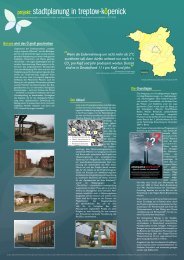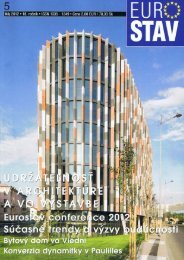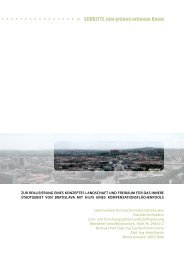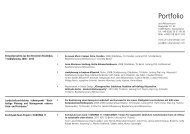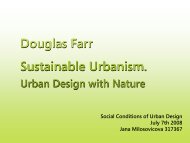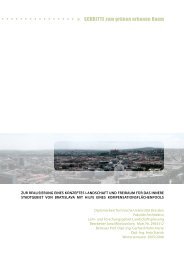Thesis document - Jana Milosovicova - Urban Design English
Thesis document - Jana Milosovicova - Urban Design English
Thesis document - Jana Milosovicova - Urban Design English
- No tags were found...
You also want an ePaper? Increase the reach of your titles
YUMPU automatically turns print PDFs into web optimized ePapers that Google loves.
2.5 Literature review: Lessons learnedAs the character of the natural landscape changes in the urbanizationprocess, the energy exchange with the atmosphere and the water cycleare affected – and hence the microscale, mesoscale and even the macroscaleclimate is modified. These aspects are additionally influencedby the urban form (morphology), with the ability to milden or exaggeratethe one or another thermal/climatic aspect.The aim of this section has been to point out that both surface characteristicsand urban geometry in the built environment are importantmatters and that we – urban designers, planners, architects, and otherstakeholders involved in city design – must learn from the natural conditionsin regards to the mitigation of the UHI effect when planning andbuilding cities.In this section, we learned that when aiming for the mitigation of theUHI effects and of extreme heat events, what really matters in urbanclimatic considerations are the following elements and their interaction:• <strong>Urban</strong> form – in particular the density/compactness and geometry– as a factor affecting insolation, ventilation and storage heatemission;• Ventilation – that enables air circulation between the cooler areas(green spaces, water bodies) and the hot urban areas, and thusprovides the hotter areas with cool air;• Solar radiation – transformed into latent heat in the process ofevapotranspiration and shaded by particular design of urban formand geometry;• Water and Vegetation – in particular their effects on loweringurban temperatures via evapotranspiration.The interaction of these elements that supports natural energeticprocesses must be well thought of and applied in urban design (fig.44). This implies that one condition for tackling the worsening climaticconditions in cities is the renewal of the basic ecological functions,which are closely connected with the return of water and vegetationto the urban environment. As explained on the example of the smallwater cycle, the necessity of the functional renewal does not only referto non-urbanized regions; it should be widely applied at the city’sand each building’s level, too!On the local (micro- and mesoclimate) level, other discussed measures– such as albedo changes of road surface or adjusting of urbangeometry – might be of use. However, it must be remembered: theevapotranspiration is the only way, where the solar energy“dissolves”, not being reflected back into the atmosphere ortransformed into sensible heat. 31 This is a rather “new” recognition31 Measurements taken on two green roofs in Berlin showed that 58% of the radiationbalance can be converted into evapotranspiration during summer months(Senstadt Berlin and TU Berlin 2010, p. 16). In a typical urban street profile witha H/W ratio 0.9 it is only 10% energy for water evaporation! (According to astudy conducted by Oke 1981 in Givoni 1998, p. 247)34Climate Sensitive <strong>Urban</strong> <strong>Design</strong> in Moderate Climate Zone: Responding to Future Heat Waves. Case Study Berlin Heidestrasse/Europacity



